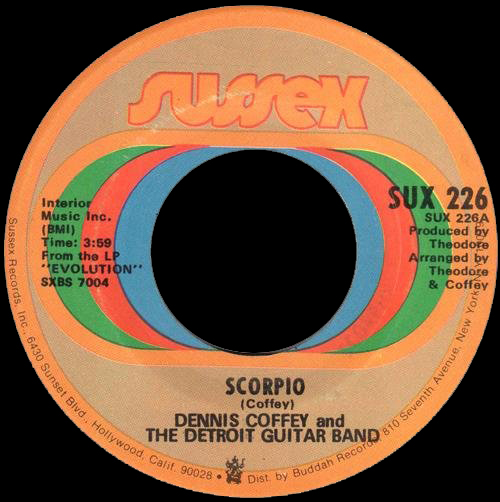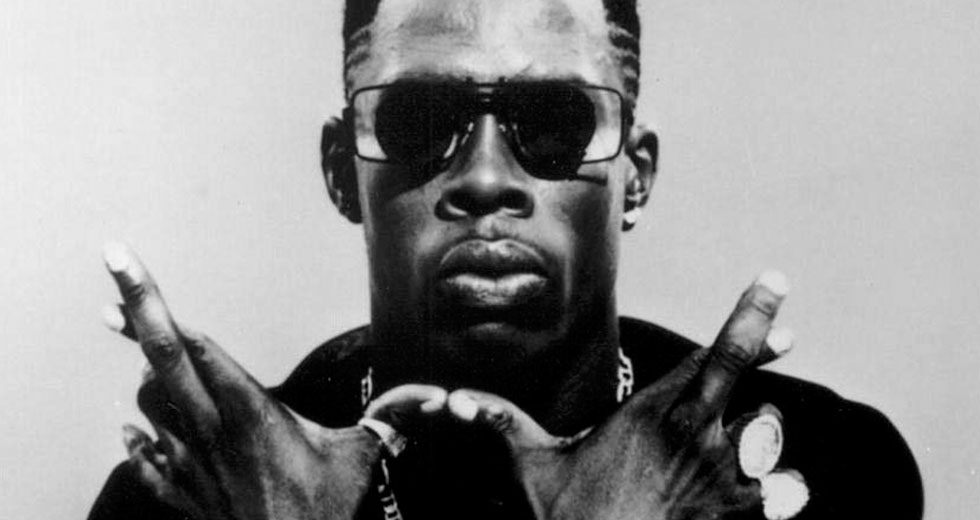Shack Up: A Loop History
Nate Patrin traces the path of this influential break
Practically everybody who punched a James Brown or Sly & the Family Stone loop into an SP-1200 knew not only what but who they were working with. Yet sometimes the greatest, most widespread breaks are shrouded in inexplicable mystery, with fluke hits turned into important building blocks for other songs. And break suppliers rarely came more anonymous than Banbarra.
Banbarra’s entire discography can be summed up in exactly one 7-inch, 1975’s two-parter “Shack Up,” released on United Artists under the auspices of one “Coyote Productions Inc.” But no matter what trail you follow, any further info on this group gets cold pretty fast. Co-producer and guitarist Lance Quinn is a notable figure – a session player on some of 1975’s most popular disco LPs (Gloria Gaynor’s Never Can Say Goodbye and Experience in particular), and later joining Tony Bongiovi to co-produce albums like Talking Heads: 77, Can’t Stand the Rezillos and the first Bon Jovi LP. Management and publishing firm Coyote had a hand in one other release of note – Iron Butterfly’s 1975 career-twilight LP Sun and Steel – while the firm’s principal, Len Sachs, shows up in stray Billboard articles as a pull-quote presence in marketing articles and not much else. (Even his 1999 Billboard obituary lists him as “unknown age.”)
Banbarra were scarcely acknowledged in the mainstream press in their (extremely) brief heyday.
Then there’s the band itself – a group comprised of uncredited musicians and based, at least if the recording locale holds true (“Track Recorders, Washington, D.C.”), somewhere in the mid-Atlantic area. It wasn’t until Issue #21 of Wax Poetics in early 2007, more than thirty years after the release of “Shack Up,” that the story behind Banbarra became clearer. Greg Wilson, British DJ and music historian, found somebody with a contact to the song’s rights owners, and tracked down members of the band as well as the former owners of the studio that recorded their sole single. Co-writers Moe Daniels and Joe “Bunny” Carter, the only credited artists on the 7-inch label, built “Shack Up” from Carter’s lyrics and a Daniels instrumental then titled “Boogie on the Other Side of Town.” And the pieces that made the song a DJ favorite – John Cannon’s extended, slippery-on-the-one drum break and Steve Moody’s grease-gun bassline – were largely assembled and put to tape in one day.
There was a catch or two, though, that eventually knocked the band apart before it really began. Carter, the man who wrote the lyrics, also sold the song on the way he sang it. And while his performance was impressive, producers Kemp Massengill and Bill Tate were worried that Carter’s spontaneous personality would make Banbarra’s long-term prospects questionable. (Massengill is quoted in Wilson’s piece as believing Bunny “was a live wire, to say the least, and not ready to be serious.”) So they made the fateful decision to slot in another singer, Baltimore blues and soul vocalist Wesley Aydlett, who turned in a strong performance that made just about everybody happy – except, of course, for Carter, who quit the band, moved to Chicago, and eventually became a respected community activist. Whether an Aydlett-fronted Banbarra would have succeeded with further releases, wound up an unanswered question: According to Massengill, an unnamed “intermediary” who inked the distribution deal with label United Artists wound up running off with all but the bare minimum of the advance, leaving the musicians and producers with no royalties.
Despite its peak at #4 on the Billboard dance charts, Banbarra themselves were scarcely acknowledged in the mainstream press in their (extremely) brief heyday. They are mentioned briefly in Vince Aletti’s Record World Disco File column, highlighting “Shack Up” in the context of disco’s attempts to buck trends: “[it’s] another hard R&B song, this one featuring a tough, aggressive drum line and shouting vocals. ‘Shack Up’ is being played in New York, though not as extensively as it is in LA, and most of the people we spoke to said they liked it because it was a change from the dominant disco sound. As Tony Gioe said, it has ‘that blackness that’s been missing.’” Most noteworthy is the observation that “the New York preference seems to be for ‘Shack Up Part II,’ which cuts the vocals down to some shouting of the title and heightens the pulse of the record.”
In the UK, “Shack Up” became a DJ favorite and even earned a cover version three years after its original release. Dundee, Scotland’s Rokotto, who had a Top 40 UK hit with 1977’s “Boogie on Up,” recorded “Shack Up” as an album track for their self-titled debut album the following year. And it’s safe to say they practically sanitized it: the monster kick drum that drove the original is missing, singer Cleveland Walker sounds practically relaxed next to Aydlett’s bellowing growl and all the living-in-sin implications are rewritten to reflect some underdefined notion of social harmony (“We can’t live together, sugar / Unless we’re set free”). So where’d all that grit go?
Turns out that A Certain Ratio found it – and then added plenty of their own. The aforementioned lead that helped Greg Wilson track down the members of Banbarra was none other than Martin Moscrop, whose take on “Shack Up” with ACR was one of Manchester post-punk’s earliest reckonings with dance music. Though it’s several orders more dissonant and deadpan than Banbarra’s original, the sour spirit is bolstered by Donald “DoJo” Johnson’s drumming and Jeremy Kerr’s bass, as lively and sure-footed as the band’s two-man horn section was off-kilter. Even from that tilted-angle perspective, the break perseveres.
It took a while for “Shack Up” to be canonized as a crucial break, having been rendered obscure by both the passage of time and its omission from Paul Winley Records’ hip hop DJ starter kit Super Disco Brake’s series. But an odd confluence of events in the mid-’80s raised the song’s profile. The same year that A Certain Ratio toured the States, UK label Stateside took the then decade-old Banbarra original, remastered and remixed it, creating a nearly five-and-a-half minute blend of Parts 1 and 2 that turned Cannon’s brief break into a recurring motif. Within a year, Street Beat Records included the original instrumental Part 2 on the fifth official volume of Ultimate Breaks & Beats, and the floodgates were opened.
And the oddly dichotomous nature of the “Shack Up” phenomenon continues: the first two acknowledged tracks to sample the song came from debuting acts on different sides of the Atlantic, who used the source for completely different ends. In the States, the Bomb Squad focused on a miniscule but identifiable portion of Moody’s bassline, nearly burying it alive beneath cranked-up drum machine snares on the title track to Public Enemy’s Yo! Bum Rush the Show. Coldcut’s debut white label “Say Kids What Time Is It?” was both more upfront about the sample and more blatant in its efforts to incorporate it into what became an early canon of sampling. (“Say Kids” also takes elements from James Brown’s “Funky Drummer,” the Incredible Bongo Band’s “Apache,” and Herman Kelly & Life’s “Dance to the Drummer’s Beat,” among dozens more.)
Tracing samples of “Shack Up” through the ’80s and ’90s reveals countless classics by revered hip hop producers, each of whom found new angles on an increasingly common loop. Another Bomb Squad transformation appears on 3rd Bass’s “Steppin’ to the A.M.,” making the bassline more prominent but shuffling the notes and upending the original emphasis. Stetsasonic’s “All That Jazz” incorporated the break in a live-band blurring of the lines between sampling and interpolation, then rubbed it in by releasing a video for it that clowned some corporate suits for claiming that hip hop “encourages thievery in the form of sampling” – as though Prince Paul anticipated the legal grief he’d get from the Turtles for De La Soul’s “Transmitting Live from Mars.” DJ Premier chopped up the flow of the drum break and truncated it with a well-timed kick on Gang Starr’s “Speak Ya Clout,” transmuting an energetic strut into a hunched-over lope. DJ Q-Bert turned it into a battlefield for scratch warfare on his 1994 turntablist showcase mix album Demolition Pumpkin Squeeze Musik. DJ Quik made a short but effective g-funk rework on Safe & Sound deep cut “Sucka Free.” And Bay Area producer Dan the Automator gave New York icon Kool Keith a horrorcore-esque splatter-metal riff over the “Shack Up” drums on “I’m Destructive.”
In the UK, Simon Harris deserves at least some of the credit for the enduring legacy of the break by including a drum loop titled “Shakbreak” on Volume 5 of his highly influential Beats, Breaks & Scratches series in 1990. That same year, Happy Mondays’ Pills ‘n’ Thrills and Bellyaches featured a song, “God’s Cop,” that gave the “Shack Up” drums a more explicitly rock-friendly context – albeit with the assistance of Paul Oakenfold and Steve Osborne. The nascent hardcore and jungle movements were game, too, and the break crossed some important paths. Art Science Technology lifted the drums for “A.S.T.” in a primordial example of the kind of breakbeat-driven acid house they’d later release as Future Sound of London. Renegade Soundwave’s leftfield blend of breakbeat, dub, hip hop, and industrial slotted the “Shack Up” break into the backbone of Thunder II EP cut “Mash-Up,” a restless, shapeshifting track that was one of many reasons they’d have such a crucial influence on artists like the Chemical Brothers.
But the original song’s role in reintroducing funk into disco and paving the way for all these permutations of dancefloor rhythms can still best be heard loud and clear in its original incarnation. Its from-the-gut soul shouts, hair-frizzing fuzz-rock guitar, lower-than-low-end funk basslines and speaker-rattling drums came from so many directions and pointed towards so many more. A cleanly edited combination of both sides – arguably the definitive version of the track – appeared on Blue Note’s soul-jazz compilation series Blue Break Beats, despite Banbarra’s slight-at-best resemblance to the likes of Lonnie Smith and Cannonball Adderley. And yet it feels like it fits, just like it’s done in so many other unlikely places through the years.

